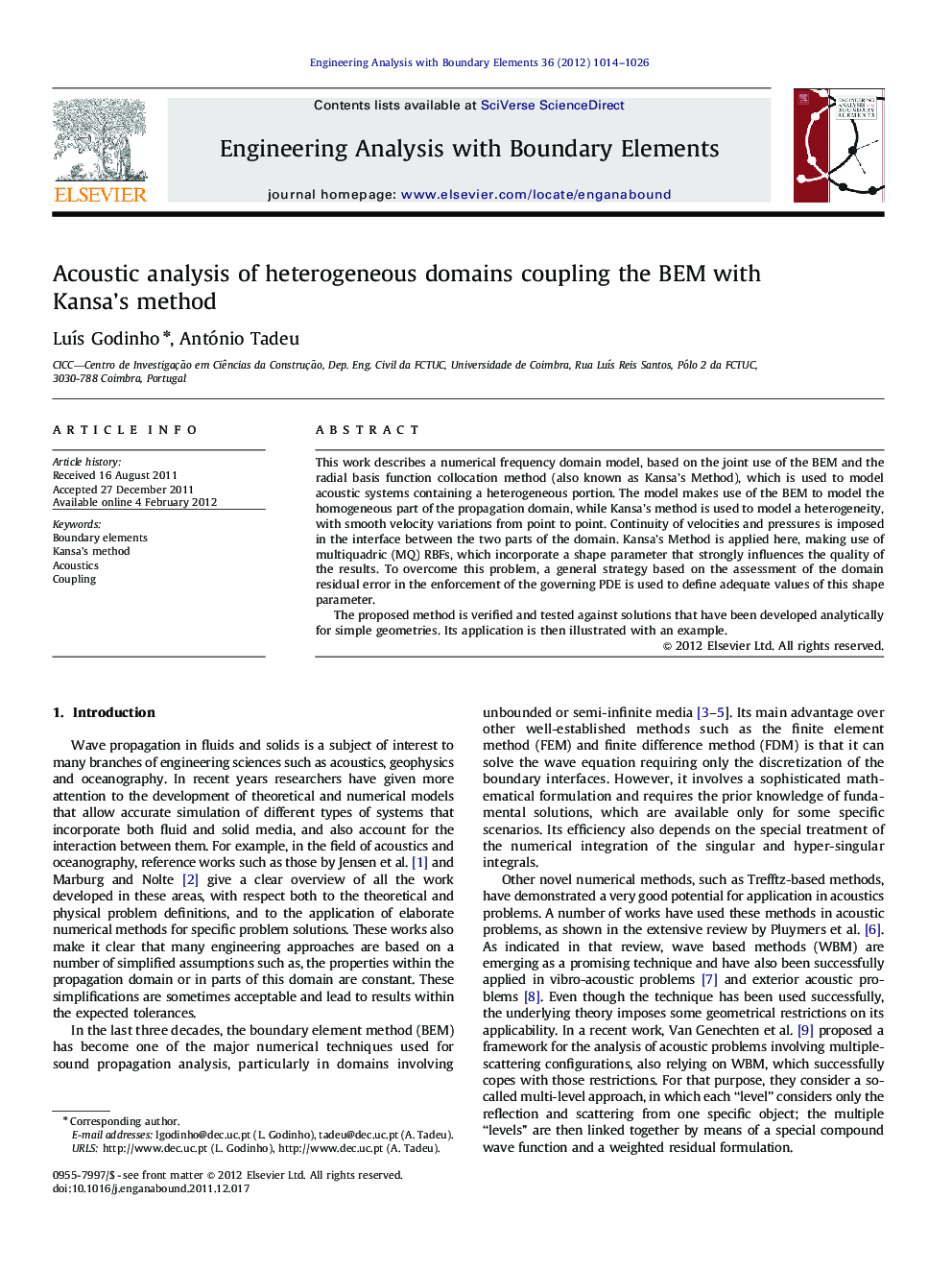| Article ID | Journal | Published Year | Pages | File Type |
|---|---|---|---|---|
| 512794 | Engineering Analysis with Boundary Elements | 2012 | 13 Pages |
This work describes a numerical frequency domain model, based on the joint use of the BEM and the radial basis function collocation method (also known as Kansa's Method), which is used to model acoustic systems containing a heterogeneous portion. The model makes use of the BEM to model the homogeneous part of the propagation domain, while Kansa's method is used to model a heterogeneity, with smooth velocity variations from point to point. Continuity of velocities and pressures is imposed in the interface between the two parts of the domain. Kansa's Method is applied here, making use of multiquadric (MQ) RBFs, which incorporate a shape parameter that strongly influences the quality of the results. To overcome this problem, a general strategy based on the assessment of the domain residual error in the enforcement of the governing PDE is used to define adequate values of this shape parameter.The proposed method is verified and tested against solutions that have been developed analytically for simple geometries. Its application is then illustrated with an example.
